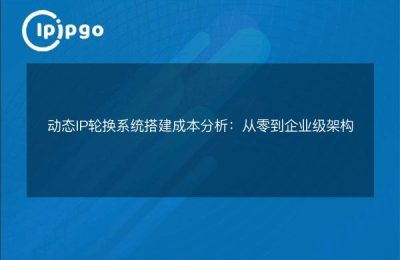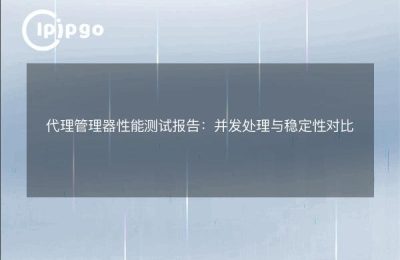
IP Proxy Implementation Methods Explained
On the Internet, in order to protect personal privacy or to realize some specific technical requirements, it is often necessary to use an IP proxy to access the network, IP proxy as a network technology, can help users to hide the real IP address, the proxy server will forward the user's request, so that the target server to see is the IP address of the proxy server, which can realize the purpose of hiding the user's real IP address. This can realize the purpose of hiding the user's real IP address. So, how does IP proxy work?
First of all, common IP proxy implementation methods include HTTP proxy, SOCKS proxy, transparent proxy and so on. Among them, HTTP proxy is one of the most commonly used proxy methods, in which the proxy forwarding of HTTP requests is realized by setting the proxy server address and port number in the HTTP request header. SOCKS proxy is relatively more general, not only can proxy HTTP requests, but also other types of network requests, including FTP, SMTP and so on. Transparent proxy is a more covert proxy, the user does not need to make additional settings, the proxy server will automatically forward the user's network requests, and the user does not need to know that they are using a proxy.
Secondly, regarding the technology of IP proxy realization, you need to consider the construction and configuration of proxy servers. When building a proxy server, you often choose to use some mature proxy software, such as Squid, ipipgo and so on. These software provide a wealth of configuration options that users can configure according to their needs. For example, you can set the proxy server's access control list to restrict which IP addresses can use the proxy, and you can also set the proxy server's caching policy to improve the speed of network access and so on.
Finally, it should be noted that using IP proxies also needs to comply with relevant laws and regulations and network usage rules. Because the use of proxies may be used by some malicious users to carry out network attacks or other illegal behaviors, so when using IP proxies, you need to make sure that your behavior is legal and compliant, and do not violate the relevant regulations.
Technical Analysis of IP Proxy Implementation
In practice, IP proxy implementation techniques involve the building and configuration of proxy servers, as well as the use of clients. When using IP proxies on the client side, some proxy tools, such as Proxifier and ipipgoR, are often used. These tools can help users easily configure and use proxies to realize IP address hiding and network access encryption.
During the process of building and configuring a proxy server, some technical details need to be taken care of. For example, attention needs to be paid to the security configuration of the proxy server to prevent access and exploitation by unauthorized users. At the same time, the stability and performance of the proxy server also need to be considered to ensure that the proxy server can run stably and does not affect the user's network experience.
In addition, the realization technology of IP proxy is also closely related to network security. In some occasions with high requirements for network security, such as corporate intranet access and cross-border access, IP proxies are often used to encrypt network transmissions and prevent information from being eavesdropped and tampered with. At this time, it is necessary to use some encryption technology, such as SSL/TLS, AES, etc., to encrypt the data transmitted by the proxy, to protect the security of network communication.
Overall, as an important network technology, IP proxy has a wide range of application scenarios and technical realization methods. Through reasonable configuration and use, it can help users realize privacy protection, network acceleration and security protection and other purposes, which is an indispensable part of the network technology field.








